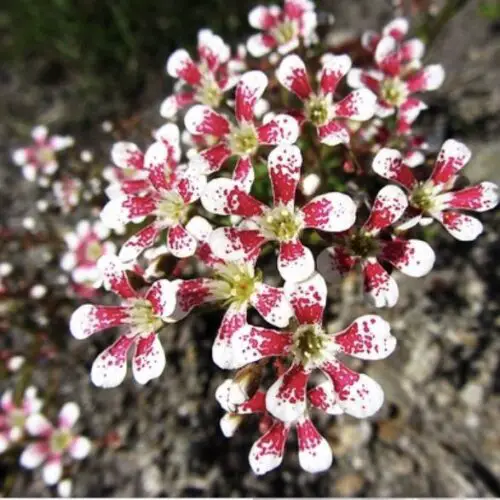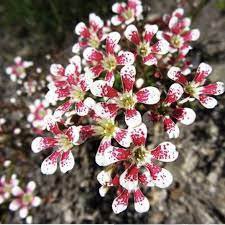Bergfrue, also known as the wood anemone, is the national flower of Norway. It symbolizes hope, renewal, and the coming of spring.
Its importance lies in its cultural significance, as it is intertwined with Norwegian folklore and traditions. The bergfrue’s delicate, white blossoms have long been revered and are frequently used in literature and art as a symbol of purity and new beginnings.
In addition to its aesthetic appeal, the bergfrue holds a special place in Norwegian hearts, embodying the nation’s connection to its natural landscape and the promise of a fresh start. This enduring symbolism has made the bergfrue an enduring and cherished emblem of Norway’s natural beauty and cultural heritage.
History Of Bergfrue
History of Bergfrue: Bergfrue, Norway’s national flower, holds deep cultural and symbolic significance within Norwegian folklore.
Origin Of The Name
In Norwegian, “Bergfrue” translates to “Mountain Lady,” representing strength and resilience in nature.
Historical Significance
- Bergfrue has been cherished in Norway for centuries, symbolizing purity and beauty.
- It is believed to have healing properties and was used in traditional folk medicine.
- The flower plays a role in Norse mythology, often associated with goddesses and magical powers.

Credit: www.reddit.com
Physical Characteristics
The Bergfrue, Norway’s national flower, is a delicate and picturesque bloom with symbolic significance. Exploring its physical characteristics sheds light on its beauty and importance.
Description Of The Flower
The Bergfrue, also known as the Wood Anemone, features delicate white petals with a vibrant yellow center, resembling a graceful ballerina. Its petals reflect the purity of Norway’s landscapes, making it a revered symbol of the nation’s natural beauty.
Growing Conditions
- Bergfrue thrives in shaded woodland areas with moist, well-drained soil, showcasing its adaptability to Norway’s diverse landscape.
- Its resilience in cold climates and preference for rich, organic soil make it a symbol of Norway’s enduring strength and natural abundance.
Symbolism In Norwegian Culture
Norwegian culture is rich in symbolism, with various elements holding deep meaning. One such element is the national flower of Norway, known as Bergfrue, or more commonly, the Wood Anemone. This delicate flower carries significant symbolism and importance in Norwegian traditions and folklore. Let’s explore its symbolism in Norwegian culture.
Representing Purity And Innocence
The Wood Anemone, or Bergfrue, symbolizes purity and innocence in Norwegian culture. Its delicate white petals are reminiscent of pure, untouched snow, a prominent feature of Norway’s landscape. Just as the flower bravely emerges from the cold northern soil, it represents the purity and innocence found in the hearts of the Norwegian people.
Associated With Love And Fertility
Bergfrue is also associated with love and fertility, making it a cherished symbol in Norwegian weddings and celebrations. The flower’s presence at matrimonial ceremonies represents the couple’s love for each other and their hope for a fruitful and prosperous union. Moreover, the Wood Anemone’s ability to thrive in various environments is seen as a metaphor for the strength of love and the power of nature’s fertility.
Overall, the symbolism of Bergfrue, Norway’s national flower, holds great importance in Norwegian culture. It represents purity, innocence, love, and fertility, capturing the essence of the country’s values and traditions.

Credit: www.quora.com
Cultural Significance
The cultural significance of the National Flower of Norway, Bergfrue, extends beyond its physical beauty. It has been woven into the cultural fabric of the country, playing a prominent role in traditional celebrations, as well as being a source of inspiration for art and literature.
Use In Traditional Celebrations
Bergfrue holds a special place in traditional Norwegian celebrations and festivities, symbolizing purity, innocence, and the beauty of nature. It is often incorporated into midsummer and May Day festivities, where it is utilized in floral arrangements and wreaths to adorn homes and public spaces, adding a touch of natural elegance to the festivities.
Incorporation In Art And Literature
The timeless beauty and symbolism of the Bergfrue have made it a recurring motif in Norwegian art and literature. Artists and writers have drawn inspiration from its delicate petals and vibrant colors, using it as a subject in paintings, poetry, and folk tales. The flower’s presence in creative works serves as a reminder of Norway’s deep connection to its natural surroundings, reflecting the country’s reverence for its flora and fauna.
Importance In The Wildlife
The Bergfrue, Norway’s national flower, plays an essential role in the wildlife ecosystem, contributing to the delicate balance of nature. Its importance in the wildlife can be observed through its role in the ecosystem and its ability to attract pollinators.
Role In The Ecosystem
The Bergfrue, also known as the wood anemone, holds significance in the wildlife by providing a crucial source of nectar and pollen for various insects, such as bees and butterflies. This contributes to the overall biodiversity of the ecosystem, supporting the survival of these pollinators and other dependent species.
Attracting Pollinators
With its alluring fragrance and colorful blooms, the Bergfrue serves as a vital attraction for pollinators, facilitating the process of pollination. This, in turn, leads to the propagation of other plant species and the sustenance of diverse wildlife within its habitat.
Conservation Efforts
Discover the significance of Bergfrue, Norway’s national flower, in conservation efforts. Its symbolism and importance underscore the country’s dedication to preserving its natural beauty and biodiversity. Learn how this delicate flower embodies Norway’s commitment to environmental sustainability.
Protected Species Status
Norway’s national flower, the Bergfrue, holds a significant place in the country’s natural heritage. As a symbol of Norway’s rich biodiversity, this delicate wildflower is also known as the Pasque flower or Pulsatilla vulgaris. Due to its vulnerable status, the Bergfrue has been granted protected species status in Norway. Considered as one of Europe’s rarest wildflowers, the Bergfrue faces numerous threats in its natural habitat. Factors such as habitat loss, climate change, and over-picking have contributed to the decline in its population. To ensure its survival, the conservation efforts towards this majestic wildflower have grown immensely over the years.Conservation Initiatives
Norway has undertaken various conservation initiatives to protect and preserve the Bergfrue. These initiatives focus on both safeguarding its existing habitats and creating new ones. Here are some notable practices that have been employed: 1. Protection of Existing Habitats: Efforts have been made to conserve and protect the Bergfrue’s natural habitats, including designated nature reserves and protected areas. By preserving these areas, the wildflower can thrive and continue its crucial ecological role. 2. Conservation Research: Extensive research and monitoring are conducted to study the Bergfrue’s distribution, population growth, and interactions with other species. This knowledge helps scientists and conservationists make informed decisions and implement effective strategies. 3. Habitat Restoration: In areas where the Bergfrue has suffered or vanished, restoration projects aim to revive the wildflower’s population. These initiatives focus on improving soil conditions, controlling invasive species, and reintroducing the Bergfrue in suitable habitats. 4. Public Awareness and Education: Raising awareness among local communities and visitors is crucial for the protection of the Bergfrue. By educating people about its ecological importance and the threats it faces, everyone can contribute to the preservation efforts. 5. Sustainable Tourism: Sustainable tourism practices are encouraged to minimize the negative impact on the Bergfrue’s habitat. This promotes responsible behavior among tourists, ensuring they respect and appreciate the natural environment without causing harm to the delicate wildflower. Through these conservation initiatives, Norway strives to secure the future of the Bergfrue and maintain its natural beauty for generations to come. By safeguarding this national treasure, the country not only helps protect its biodiversity but also showcases its commitment to environmental sustainability.Bergfrue In Modern Norway
Bergfrue, Norway’s national flower, continues to hold a special place in contemporary Norwegian culture. Its significance and symbolism remain cherished, reflecting the country’s deep-rooted connection to nature.
Continued Popularity:
The Bergfrue flower’s enduring popularity is evident in many aspects of modern Norwegian life. It is often used in various cultural events, from weddings to festivals, for its beauty and symbolism.
Cultivation In Gardens:
Bergfrue’s cultivation in gardens across Norway ensures its legacy is preserved and appreciated by future generations. Many Norwegians take pride in nurturing these flowers in their outdoor spaces.

Credit: en.wikipedia.org
Frequently Asked Questions On Norway’s National Flower: Bergfrue’s Symbolism And Importance
What Is Norway’s National Flower?
The national flower of Norway is Bergfrue, also known as the Wood Anemone or Anemone nemorosa.
What Is The Symbolism Of Bergfrue?
Bergfrue symbolizes purity, protection, and the coming of spring in Norwegian folklore and culture.
Why Is Bergfrue Significant In Norway?
Bergfrue holds cultural significance as a symbol of rebirth, new beginnings, and the beauty of nature in Norway.
How Is Bergfrue Celebrated In Norway?
Bergfrue is celebrated during the annual Wood Anemone Festival in Norway, where people gather to enjoy the beauty of this flower.
Where Is Bergfrue Commonly Found In Norway?
Bergfrue thrives in woodland areas, forests, and meadows throughout Norway, adding to the country’s natural beauty.
What Are The Traditional Uses Of Bergfrue?
In traditional medicine, Bergfrue has been used for its healing properties, including relieving headaches and toothaches.
How Can Visitors Experience Bergfrue In Norway?
Visitors can explore Norway’s natural landscapes, such as national parks and hiking trails, to admire and experience Bergfrue in its natural habitat.
Conclusion
The symbolism and importance of Norway’s national flower, Bergfrue, is truly remarkable. Its enduring beauty and resilience are reflective of the nation’s landscape and the strength of its people. From ancient folklore to modern celebrations, Bergfrue remains a cherished symbol of Norway’s rich cultural heritage.
Whether adorning landscapes or capturing hearts and minds, this delicate flower continues to inspire and ignite a sense of national pride. Norway’s national flower is a testament to the beauty that can be found in even the harshest of environments, and serves as a reminder of the country’s deep connection to nature.
